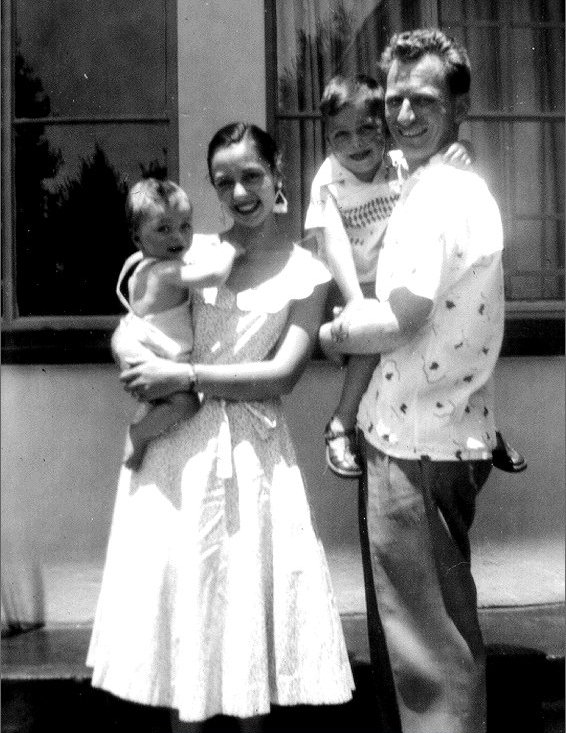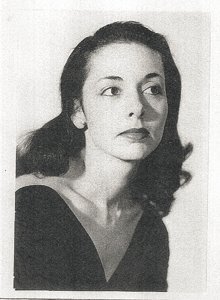A Housewive’s Tale
In 1963, the year Nelson Mandela was sentenced to life in prison for leading a conspiracy to violently overthrow the South African government, Henning Carlsen, a then-unknown Danish film director, had just completed another, albeit less notorious, act of subversion against white minority rule in South Africa.
In the months prior to Mandela’s arrest, Carlsen had set foot in South Africa to shoot a film based on A World of Strangers, a novella by South African Nobel laureate Nadine Gordimer, about a white Englishman who crosses South Africa’s segregationist “color bar”. With Gordimer’s book banned as “subversive” by the government, the title of Carlsen’s film would be Dilemma.
(See the full movie here): Dilemma
Making this film in South Africa, at the time a de facto police state with strict censorship laws, would not be easy. Permits to shoot a film based on a banned piece of literature were certain not to be granted, and the production therefore would be forced underground, risking the full wrath of South Africa’s security apparatus, as Mandela and his colleagues in the African National Congress’s military wing, Umkhonto we Sizwe (“Spear of the Nation”), would certainly know.
A gadfly-provocateur disinclined to risk a harsh South African prison term, Carlsen secured permits to shoot all right—but not for the film he intended. Rather, according to authorities who issued the permits, Carlsen’s Danish film crew would be shooting an “industrial”—the 1960’s equivalent of an infomercial—about South African housewives and their refrigerators. Nothing, of course, would be farther from the truth.
“Leading Blacks Astray”
Few outside South Africa know it, but there was a forgotten man within Mandela’s inner circle who would face arrest for sedition along with him: one of his most trusted and respected partners in the ANC plot to violently overthrow the government was a white South African Jew named Arthur Goldreich, who died in Tel Aviv in 2011 at the age of 81. Arrested on July 11, 1963, almost a year after Mandela’s arrest, along with 16 other top ANC leaders, Goldreich, who trained professionally as an artist in commercial design, was also a combat veteran in Israel’s 1954 war for independence, where he fought with the elite Palmach.
It was Goldreich’s experience in guerilla combat that Mandela most prized, and Goldreich proved instrumental in not only raising money for the resistance from sympathetic Communist governments, but in developing the ANC’s strategy of weapons design and sabotage as well. With Mandela already in prison, it was on Liliesleaf, a farm in Rivonia, South Africa, 10 miles north of Johannesburg, where Mandela, Goldreich and the ANC top leadership would conspire, and where all but Mandela would ultimately be arrested—conferring onto their trial the location of the farm (“The Rivonia Trial”).
In a scene worthy of fiction, Goldreich would pose as the farm’s owner (though it was in truth owned by the South African Communist Party), and Mandela as David Motsamayi, Goldreich’s blue overall-wearing “boy”, who for cover, would sell fruit at a nearby roadside stand.
At the time, Goldreich’s arrest was considered more valuable by the government than Mandela’s. Because of his ties to Communists, he was deemed “the largest fish netted”, vindicating the government’s anti-Communist ideology, and their narrative that left-wing whites like Goldreich were leading black Africans like Mandela astray. Of course, implicit in this canard was the regime’s racist assumption that black people (“our blacks”) were incapable of planning a revolution on their own.
The Kids Across the Street

Carlsen had cast as his leading lady another resident of Bellevue East, a 32 year-old actress by the name of Evelyn Frank, a rising star of South African stage and screen, said to be “one of the most beautiful women in Johannesburg”. Evelyn had two sons with her American husband Mike (memorialized in Tusker Geografica), Tusker founder Eddie Frank, then a rambunctious, homework-hating 11 year-old, and his irritating 8 year-old brother (then) Larry, who would go on to a career as a Lecturer.
Among Eddie and Larry’s play pals were the kids across the street, Nicholas and Paul Goldreich, and indeed, among Evelyn’s more heady “progressive” friends, was their dad, soon to be Public Enemy #1, Arthur.
Social Consequences
While Evelyn neither advocated nor participated in violent revolution, she was a performing artist who had long-volunteered for the anti-apartheid Progressive Party, and who had gone to considerable risk in her career by opposing the injustice she saw in her beloved homeland. Having performed live theater for “mixed” (i.e. black and white) audiences, she had defied the nation’s “color bar”—the USA’s own Jim Crow segregationism on steroids—and more than once had come across the radar of the dreaded “SAPs” (South African Police).
In agreeing to play the part of Anna Louw in Carlsen’s Dilemma, an Afrikaans lawyer running a legal aid society assisting black South Africans who had run afoul of apartheid’s “race laws”, Evelyn was risking her own political “banning”—an extreme public rebuke levied against government foes that would cost you respectability, status and of course income, or, as was the case with Goldreich and Mandela—freedom. Being “banned” back then was a perilous step closer to incarceration.
And so, just as Mandela, Goldreich and the top ANC leaders would be sentenced to life in prison for sedition, Carlsen, his cast and crew had set out to explore both in the content of their film, and as it would turn out, in the production itself, the social and legal consequences of apartheid.
Full Immunity
While few perils to one’s self could be equated with a life term in Robben Island (“Seal Island”, in Dutch), South Africa’s then-dungeon of choice in Table Bay about 8km west of Cape Town, Carlsen and cast and crew, with their nimble guerilla production had undertaken a significant risk of their own: creating a politically controversial film during one of the tensest periods of the anti-apartheid struggle, when the regime had redoubled its broadside against “subversion”.
The film company shot in a combination of private locations in wealthy white Johannesburg suburbs like Sandringham, and in smoky Soweto shebeens where homebrew and vivid local music were being served. Like any good incursionary force, they traveled light and left a small footprint. And to help inure the production against any self-incrimination, Carlsen got help from personnel at the Danish embassy, who had agreed to smuggle exposed film out of South Africa in its official mail pouch, which with customary diplomatic immunity, would provide protection from government snoops. As an added precaution, Carlsen cunningly dispatched a second, diversionary crew to shoot the purported infomercial, with no film in the camera, of course.
No Such Luxury
It wasn’t until Dilemma’s Danish cinematographer, Henning Kristiansen, shooting in 16mm black white, needed to actually see some of his footage, that the production found itself imperiled. Those were pre-video days, and with every production shooting film, there was no such thing as instant video playback, auto-focus, or auto-exposure, features that come automatically on any smartphone today. Shooting film was highly technical; everything related to the image had to be calibrated precisely, without the benefit of preview, by hand. It may seem like an alien concept, but in order to see any of your photography, whether motion or still, you would have to take exposed negative (“shot film”) to a lab for processing. And wait.
In a normal production, which is to say one not deceiving a police state, you could review “dailies”—yesterday’s footage, processed, on a “daily” basis—to ensure that you were getting all your shots. Risking the wrath of the SAP censors, Dilemma would enjoy no such luxury.
On the Run
Kristiansen had smuggled a reel of his exposed film to a sympathetic lab in Johannesburg, where it was processed, with the plan to have it smuggled back to him for review. But as fate would have it, the crew had developed a mole in their midst, or at very least a quisling who had succumbed to guilt or fear, or both, thereby revealing the true nature of Dilemma’s content to the dreaded SAP. And so, the film that Kristiansen had processed at the lab was interdicted on its way back to him, putting the production, and all associated with it, at risk. Once alerted to the “subversives”, the SAPs were determined to shut them down.
There’s a scene, early in Dilemma, where the Englishman, Toby Hood (Ivan Jackson), joins his new black South African friend, Steven Sitole (Zakes Mokai) for a beer and smoke in a Soweto shebeen. Discovering the “color bar” first hand, Toby is forced to flee the joint with Steven when cops crash in to bust the place. Being caught “fraternizing” across the racial divide for both men was, of course, a punishable offense. In a poignant case of art imitating life, the film crew found themselves similarly in breech, and on the run.
Lip Reader
Crude by today’s standards, 1962 film technology actually afforded Carlsen and his Dilemma company a small headstart as the SAP started hunting them down. Sound (i.e. the dialogue) was recorded on magnetic tape, separate from the film itself, and through the wonders of an oscillating crystal on the Nagra sound recording device, was able to remain “in sync” with the film being shot. (It was only in post-production that the “mag strip” of audio got married, literally, to the processed film.) As an abundance of caution, the film that had been sent by cinematographer Kristiansen to the local lab did not include the audio mag strip, and therefore was, as they said in the parlance, “without sound”.
So, what the SAP had intercepted were only the visuals for this scene (starting at 0:54) with no clue of its audio content, but based on the visuals alone, they could fairly tell that it was no infomercial that Carlsen was shooting. Thus delayed without sound, the SAP did what any self-respecting thought police would do: they hired a lip reader to help interpret the dialogue, which by their definition, once decoded, was seditious.
By then, Carlsen had gotten enough of the film in the can to complete it, but not without a spectacular cloak and dagger dash with his very last footage to Jan Smuts Airport on the outskirts of Johannesburg—by none other than Evelyn Frank’s husband Mike, the least suspicious of anyone associated with the production, who zigged to the airport with the exposed negative, when the SAP were expecting Carlsen to zag to the Danish embassy.

When the scandal broke that a Danish film crew had surreptitiously been making an anti-government film based on a banned book, a minor diplomatic “event” burst forth. Recriminations, denials and apologies flew, from Carlsen (dissembling wryly beginning to end); from the only marginally-embarrassed progressive Danish government; but mostly from the local cast and crew who claimed ignorance of the film’s subject matter, blaming director Carlsen for a grand act of deception. That is, all but Evelyn Frank.
With her Progressive Party bona fides; with her proud history of performing across the “color bar”; with her social and neighborly connection to Arthur Goldreich, Public Enemy #1; and her belief in Dilemma for what it would expose about her birthplace to the world, Evelyn made neither excuse nor apology for her role as Afrikaans pro bono lawyer, Anna Louw.
Then, for her and her family, came the phone taps. Then came the “polite” visit from the Afrikaans-accented SAPs. And finally, a summons from “the Colonel” who, over tea, made the “polite” request that Evelyn inform on her “seditious” fellow-artists. Predictably, her answer was an equally polite no, their chilling encounter later to be memorialized in Evelyn’s poem, “Command Performance”, 40 years hence, and published in her anthology of verse depicting much of her life growing up an artist under apartheid, “Against a Barren Sky”.
Ultimately, the post-Dilemma police action, the widespread repression of dissent, let alone the black South African majority, and the looming threat of a race war, which Mandela upon his release from prison in 1990, so brilliantly helped avert, led Evelyn and Mike to emigrate to America in 1965 with their sons.
Easy Meat
By then, Mandela had begun the prison term that would transform him into one of the greatest political leaders of any century, while Goldreich, for his part, more or less slipped from the pages of history when he and Harold Wolpe, a civil rights lawyer, bribed a guard at their detention facility in Johannesburg and fled into the night, finally making it safely to an ANC heroes’ welcome in then-Bechuanaland (now Botswana).
While the complicit prison guard, Johan Greeff, an Afrikaaner, did more time for his part in Goldreich’s escape (two years) than Goldreich ever did for sedition, the poor guard was arrested so quickly that he never had time to collect on his bribe (£2,000) for the gracious assist.
Described by Goldreich’s first wife Hazel as “easy meat” to Goldreich’s powerful charms, Greeff was made whole for the debt 40 years later, when a courier arrived at his remote northern Cape “motor repair” shop with a check for £10,000. Goldreich had said that “Greeff was a kind man who paid a severe price for his act”, and therefore deserved restitution.
Jewel in the Crown
While Goldreich went on to Israel where he pursued the life of artist and educator, Dilemma enjoyed a standing ovation at Cannes when it was screened in 1962, and that same year, won the Grand Prize at Mannheim-Heidelberg International Film Festival. Yet like Goldreich, as the product of a momentous two years in South African history, when it was extremely dangerous to take a principled stand against a system of government that has since been completely discredited, Dilemma remains surprisingly obscure and only occasionally celebrated.
As a drama shot underground during the height of apartheid in a striking ‘60s neo-realist style, with extended authentic South African music sequences, as well as a luminous, historic soundtrack, the Freedom Now Suite, written by jazz great Max Roach in 1960 to commemorate the Civil Rights Act in America, Dilemma was rightly called “the crown jewel” by the New York Times when it screened at MoMA in New York during the museum’s 2008 “Jazz Score” series.
All of the characters in these intersecting storylines, whether imprisoned or not, whether fictional or not, whether revolutionaries, actors or artists, had laid their lives on the line for principles in which they believed, contracting during those two years of living dangerously an infectious sense of martyrdom that, in today’s world, save for fanatics, seems all but unimaginable.
It was an analog time, pre-video, where you had to wait to see your film. Now, it seems, in our age of instant everything, we will have to wait for people like them who take risks, not for fame or fortune or market reach, but ideas.


